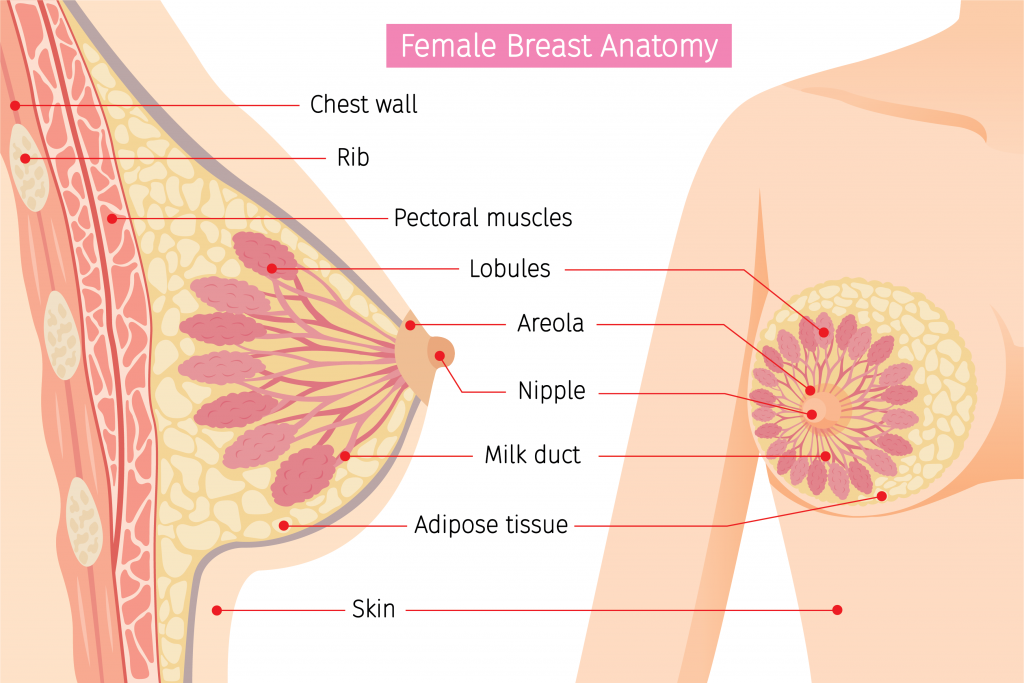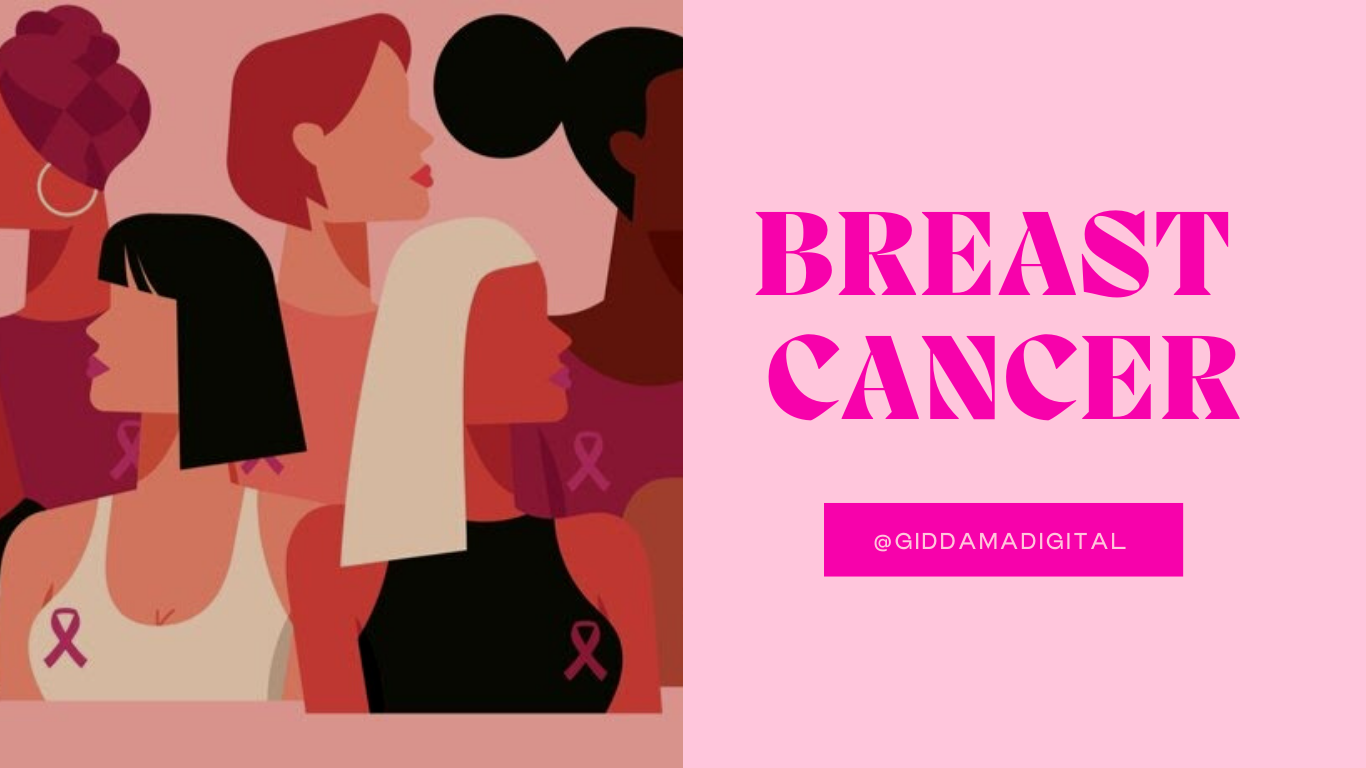BREAST CANCER SERIES 1: Knowing The Breasts
The breasts are secondary sex characteristics of females but are also present in rudimentary form in males. The female breasts begin to develop during puberty due to the production of the hormone estrogen and growth hormones. The breast is a modified sweat gland.
The breast consist of mammary gland, which is made up of a number of ducts and secretory lobules. Each lobule is made of tiny, hollow sacs called alveoli, which drain into a single lactiferous duct (milk duct). The milk duct serves as the passageway of the milk from the lobules to the tiny holes in the nipple. The dark area of skin surrounding the nipple is known as the areola. Newborns do not see quite well so the areola which becomes darker after birth helps them find their source of food.

The mammary glands are lined by cells known as myoepithelial cells which have the ability to contract to release milk from the lobules. The breast is anchored to the chest wall by strong a ligament known as the cooper’s ligament. The breast is also made up of adipose or fat tissues which determines the size and softness of the breast. The breast do not have muscle tissues but there are muscles lying underneath the breast which separate it from the ribs. There are also blood vessels that carry blood to and from the breasts and underlying muscles; the pectoralis muscles. There are also the lymphatic vessels that drain into lymph nodes under the armpit, above the collarbone, behind the breastbone. The lymphatic drainage of the breast is of clinical importance because it plays a major role in the metastasis of breast cancer.
When a woman is not lactating or breastfeeding, the milk duct is blocked by what is known as the keratin plug to prevent bacteria from entering the duct to cause infection.

Well explained for the common person to clearly understand
ReplyDeletePlease when will the next information be released?
ReplyDelete